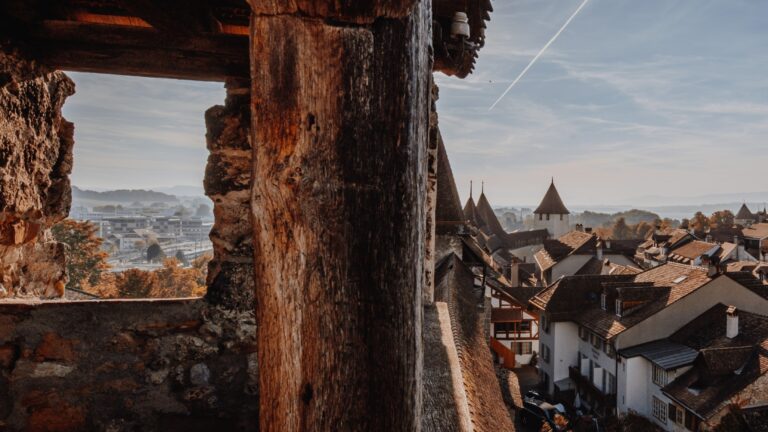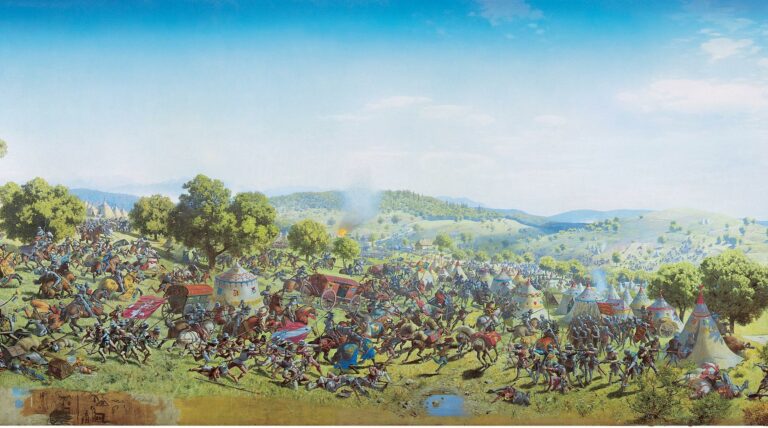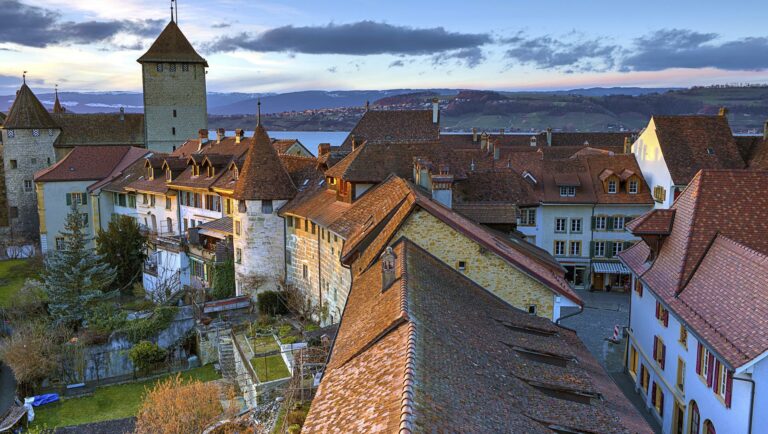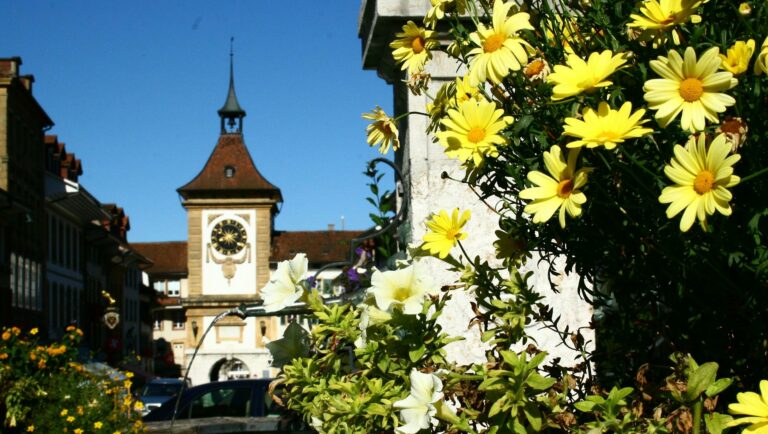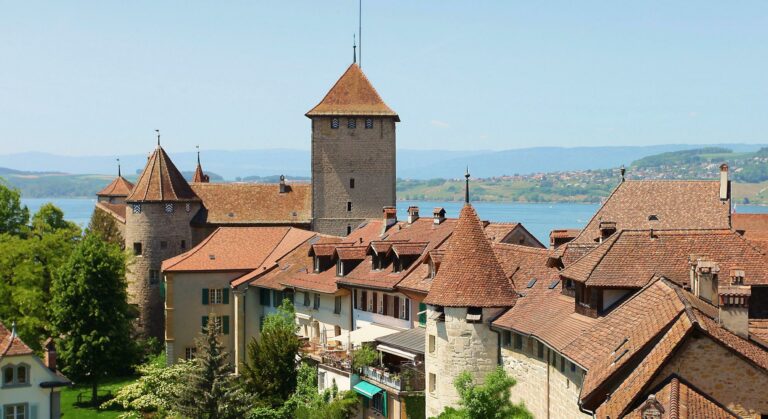The Battle of Murten symbolizes the emerging potency of the Swiss Confederacy in its beginnings. Their opponent, Charles the Bold or Charles the Brash the last of the Valois Dukes of Burgundy was also, as the new Confederacy, young, dynamic and ambitious.
Between his 42nd and 43rd birthday (10th of Nov. 1475 and 1476) he lost the two crucial battles, Grandson and Murten and was not to live to his 44th birthday as he was slain in the Battle of Nancy on January 5th 1477. His remains are buried in Brugge at the Liebfrauenkirche.
Charles the Bold marched on Murten from Lausanne on June 11th 1476 with an army of approximately 25’000 men. Charles army outweighed the militia of Adrian von Bubenberg, the appointed protector of Murten in a ratio of 10:1. Charles however knew that he must expect the arrival of the relieving forces of the Confederacy and hoped to be able to conquer Murten before they should arrive as he had been able to do in Grandson. As protection for his forces he set up an outpost on the “Grünhag” (1). He had set up his own camp on the fields of the “Bois Dominque” (2) to be able to view the advancement of the siege and keep an eye out for the coming of the anticipated relieving forces of the Confederacy.
The rampant walls which at the time of battle the core dated 200 years and in parts needy in repairs were all that stood between Adrian von Bubenbergs’ forces and those of the much larger of Charles the Bold. Especially the well organized storming of the walls by Jacob of Savoy, The Count of Romont, former town lord and sympathizer of Charles the Bold came as a hard blow. According to the envoy from Milan, who stood on the side of the Burgundies at least 60 men fell. Charles then went on to set up another attack on a second point however without success.
The brave defense of the town of Murten by the militia of Adrian von Bubenberg and the victory of the Swiss infantry on June 22nd 1476 made the potency of the Swiss Confederacy visible throughout Europe.
(1) “Grünhag”: a barrier fortifi ed with artillery (palisade entrenchment)
(2) In German the term “Bodemünzi” Comes from the French “Bois Dominque” and means a grand forest . In “Patois” (French provincial speech which was used throughout the Romandie) “bo demindze” became Bodemünzi.
Region Murtensee / Région Lac de Morat
Hauptgasse 27
3280 Murten







